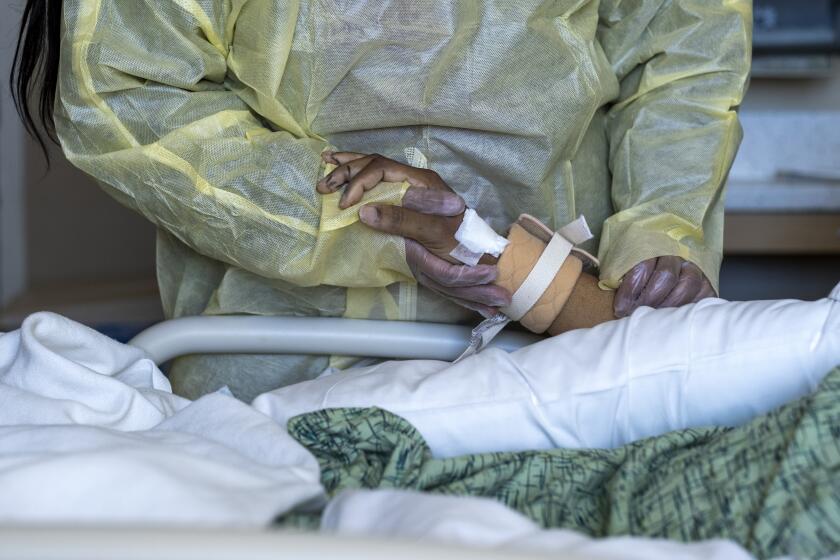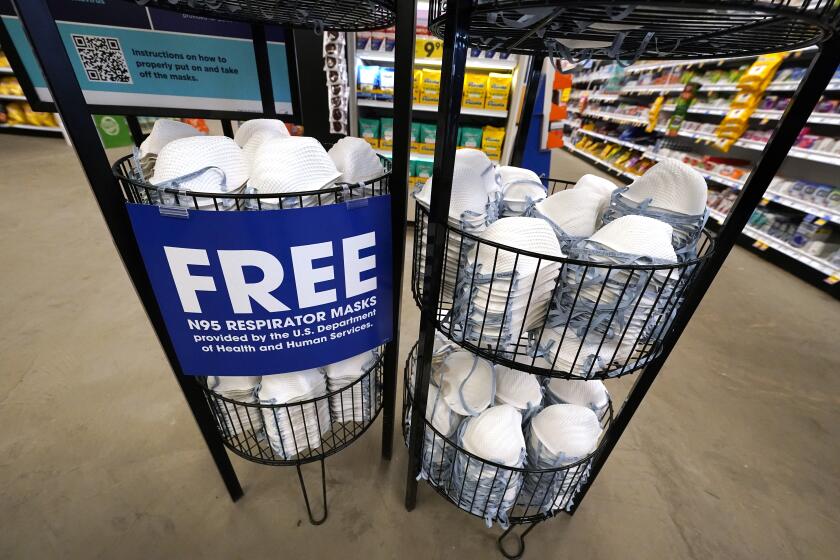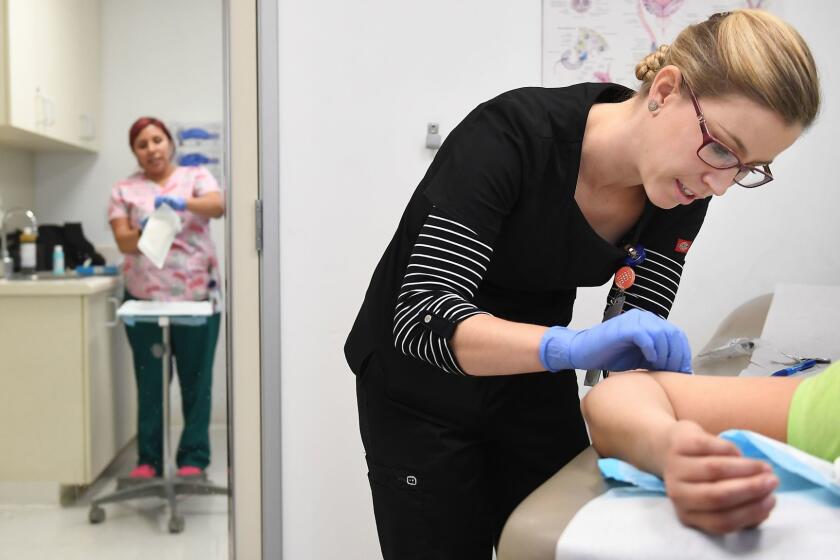This COVID-19 tracker changed how we saw the pandemic. Its creator fears it won’t be useful much longer
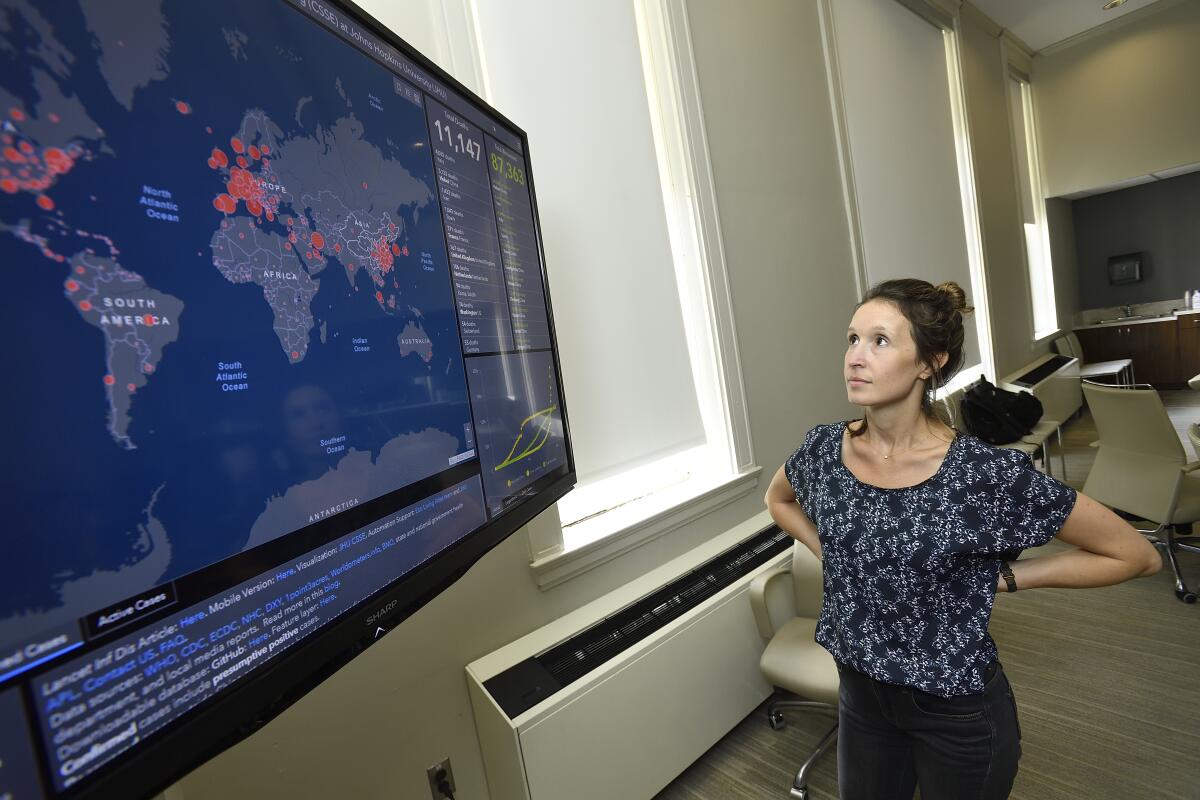
- Share via
In the beginning it was a lifeline, an organized collection of facts amid a swirl of coronavirus uncertainty and misinformation.
“Feels like this is going to be another day where it’s a battle to do anything while staring at the Johns Hopkins dashboard,” an editor in Michigan tweeted on April 13, 2020, along with a screenshot of the global death toll to date at that time: 114,983.
Nearly 2½ years later, more than 6.5 million people have died from COVID-19, hundreds of millions of infections have been recorded, and Lauren Gardner, the Johns Hopkins engineer who led the creation of the university’s lauded COVID-19 dashboard, has been recognized with a major prize.
On Wednesday, Gardner won the 2022 Lasker-Bloomberg Public Service Award. Past honorees include Doctors Without Borders and Dr. Anthony Fauci.
Bestowed by the Albert and Mary Lasker Foundation for achievement in medical science, the Lasker awards are sometimes referred to as “America’s Nobels,” and many honorees go on to win Nobel prizes.
The dashboard “set a new standard for disseminating authoritative public health data in real time,” the judges said, and “cut through the noise of misinformation and became the most authoritative and trusted source of information for the COVID pandemic.”

The COVID-19 dashboard: Tracking a pandemic in real time
In an ironic twist, the prize was announced while Gardner, 38, was riding out a coronavirus infection at the home in Baltimore she shares with her husband, toddler daughter and their dog. It also comes a week after Johns Hopkins announced that it’s scaling back the tracker due to the declining quality of data from U.S. states.
“We’re not magically creating any of this COVID data. It’s all 100% collected from what’s been publicly reported,” Gardner said. With resources being diverted away from COVID-19, the accuracy and timeliness of the data simply aren’t what they used to be, she added, “which is disheartening.”
Before the pandemic, the Texas-born Gardner was an academic specializing in modeling infectious diseases. She returned from an eight-year stint at Australia’s University of New South Wales in 2019 to take a position as an associate professor at Johns Hopkins’ Whiting School of Engineering.
In January 2020, Gardner was talking with her graduate student Ensheng Dong, who had been worriedly checking for updates on family in China’s Shanxi province. Gardner suggested he create a map to track the virus globally. Dong built a website in a day, and after a few tweaks it was live.
The dashboard debuted to the public later that month, when the majority of people in the U.S. were still blithely going about their business, with only glancing acknowledgment of the virus spreading through Wuhan, China.
The death toll has fallen from past surges, but rates this summer still equate to COVID being one of the leading causes of death in the U.S.
In the early days, as the pair worked to import data manually, they imagined the map as a valuable tool for a relatively small community of academics and researchers monitoring the virus’ spread.
Then the stay-at-home orders hit. In their shock and confusion, people went searching for reliable information on the spread of a virus upending their lives. They found the Hopkins dashboard. In March 2020 the website that hosted the map, arcgis.com, registered nearly 1 billion visits.
Gardner and her students knew the work mattered. But they were shocked to realize how many people were relying on it.
“We knew it was important. I knew that the data had a lot of value, because I always did work where we needed that kind of data and didn’t have it,” Gardner said. “But I guess I didn’t expect to be the sole source of it.”
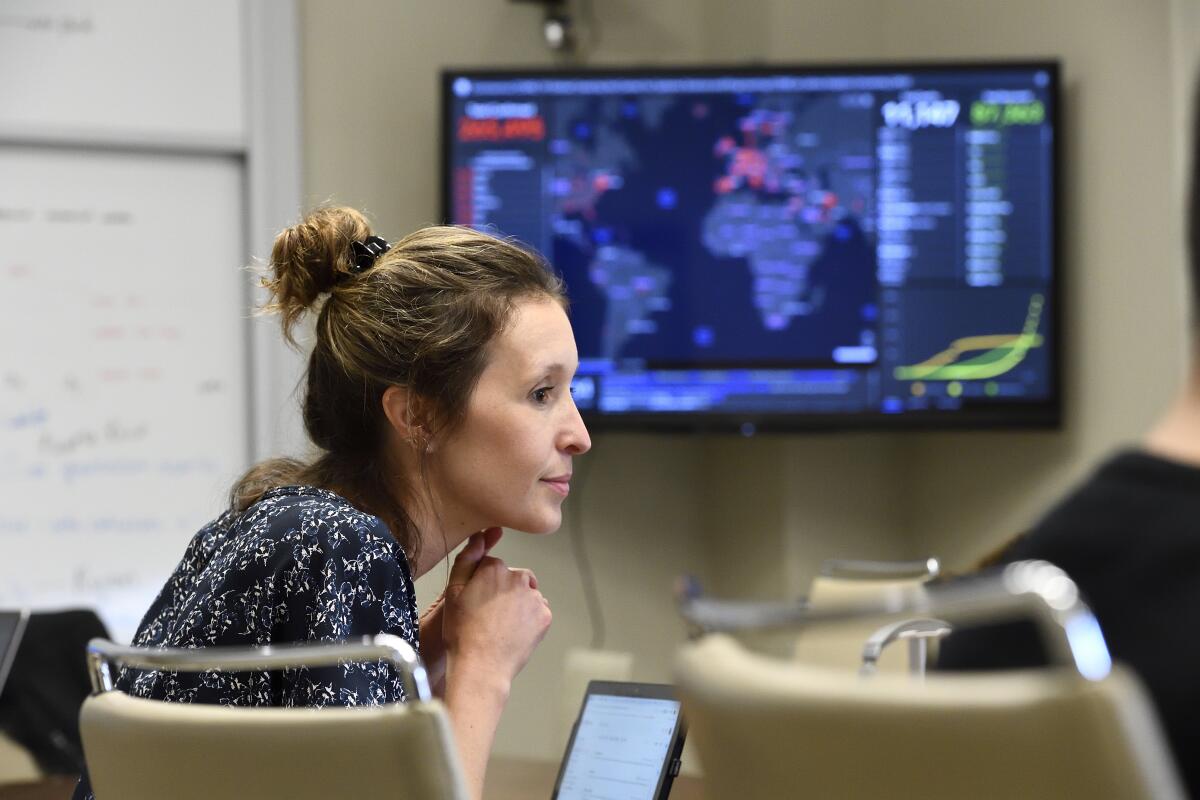
Both the U.S. Centers for Disease Control and Prevention and the World Health Organization were overwhelmed at the pandemic’s start.
In the absence of a steady flow of data from reliable government sources, and with misinformation swirling on the internet, the tracker let policymakers, healthcare providers and average people make responsible decisions.
“When I could see numbers rising in the U.S. and nearby states, we started to implement procedures to see our immunocompromised patients virtually and keep them protected,” said Dr. Michelle Rheault, a pediatric nephrologist at the University of Minnesota children’s hospital.
“While it was terrifying to watch some days, it provided the knowledge that I needed to do my job.”
As COVID-19 cases multiplied around the world, so did the behind-the-scenes work to keep the dashboard going. More and more countries were reporting deaths and cases, which meant more data to gather, verify and standardize. Manual updates were no longer feasible, so the team built automated scrapers to gather data from official health databases around the world that were available to the public.
“It was really just a continually adaptable system that we were having to develop,” Gardner said. “We were just working around the clock for that year.”
When stay-at-home orders came to Maryland, the group had to disperse to home offices. (That’s also when Gardner learned she was pregnant. Her first child was born in December 2020.) Nonetheless, the dashboard kept growing.
It appeared behind President Trump at news briefings. Its figures were cited in news reports and factored into policy decisions.
If the U.S. public health emergency ends, Americans would be vulnerable to a new coronavirus variant that sparks another COVID-19 surge.
The team had a rule to include only publicly available data so that anyone who wanted to could verify the dashboard’s sources. When state or regional agencies contacted the group privately to offer case counts they didn’t want to report officially, the Johns Hopkins engineers declined.
“Make it public, and then we’ll put it on our data file, too,” Gardner said she told them. “But we’re not just accepting things behind the curtain.”
Often, it worked. The bigger the tracker got, the more willing agencies were to provide data the team asked for, including race and ethnicity breakdowns. The dashboard would eventually expand to include testing and vaccination numbers.
“That power, just because we had so many eyeballs, was something that was really helpful,” Gardner said. “But it didn’t last.”
As Gardner noted, its value was dependent on the quality of the data reported. As the pandemic dragged on and health budgets scaled back, mandatory testing programs ended and home tests that didn’t have to be reported became more available, the quantity of good, accessible data fell.
We’ve all just lived through a massive public health crisis that has underscored the value of having reliable, quality data to base decisions on. What frustrates Gardner is that we seem to be emerging from that crisis with no more willingness to ensure such data are available the next time one comes around. Basic standards for public health data reporting would go a long way, she said. If data were reported uniformly, it would be easier for the next group to gather and share in an accessible way.
The Johns Hopkins team showed that it’s possible. But right now, there’s no rule or agency with enforcement authority to make sure that it happens.
“The research is amazing. Our science is amazing,” Gardner said. “Our science has taken a big step up. I think the problem is the communication and translation from science to policy to the general public just has not evolved at the same rate. We’ve just really dropped the ball in the second half of that.”
Planned Parenthood, the embattled nonprofit health provider that specializes in reproductive health, has won the 2017 Lasker Award for public service.
In addition to honoring Gardner, the foundation gave this year’s prize for basic medical research to Richard O. Hynes, Erkki Ruoslahti and Timothy A. Springer for discoveries related to integrins, a family of cell receptors that play an important role in cell growth, migration and signaling.
Yuk Ming Dennis Lo won the award for clinical research for his discovery of fetal DNA in maternal blood, reducing the need for invasive and potentially harmful prenatal test procedures.
